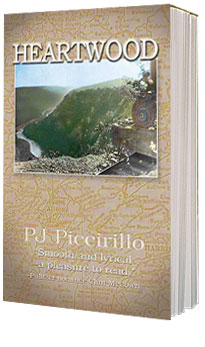Heartwood | Author's Notes
The Allegheny Plateau: A Succession of Big Trees And Transients
In 1682, when William Penn arrived in what would become the Commonwealth of Pennsylvania, stands of white pine, eastern hemlock, and mixed hardwoods covered nearly all of its 20 million acres. The heartland of the state, divided between the Allegheny Mountains to the south and the Allegheny Plateau in the north, contained huge tracts of the densest forests. Botanist John Bartram, traveling up the Susquehanna River in 1743, found woods so thick “it seems almost as if the sun had never shown on the ground since the creation.”
The northern tableland, etched by forbidding deep hollows of headwater creeks, was shunned even by native Americans, who visited mainly in hunting forays. Passing use continued on a larger scale with the loggers, tannery workers, oil drillers and miners who accounted for highly transient communities that peaked during the early twentieth century boom of devil-may-care lumbering and industry. Through it all, and into today, weaves the evolving story of Allegheny logging.
Much of the Allegheny Plateau, the eastern bulk of which is also known as the northern tier and used interchangeably here, is again forestland--in some counties, seventy percent of the land comprises national or state forests. However, the forest’s composition is much altered, not only by humans, but parasitic plants and insects. Today, instead of producing pine spars for clipper ships, and the tannin of hemlock bark for treating buffalo hides, the region yields hardwoods for goods ranging from baseball bats to cabinet veneer.
The Allegheny Plateau continues as a place of transients; many townships hold more camps than homes, and entire counties have only one--or no--streetlight. Very few of the 50-million northeasterners who live within six hours of Pennsylvania’s northern tier realize that in the very center of their geography exists a tract of wild forestland so remote that it boasts the darkest recorded skies east of the Mississippi. As unnoticed as this rural pocket has remained in the midst of civilization, one of the world’s richest lumbering heritages, existing to this day, has carried on virtually unknown beyond its range.

